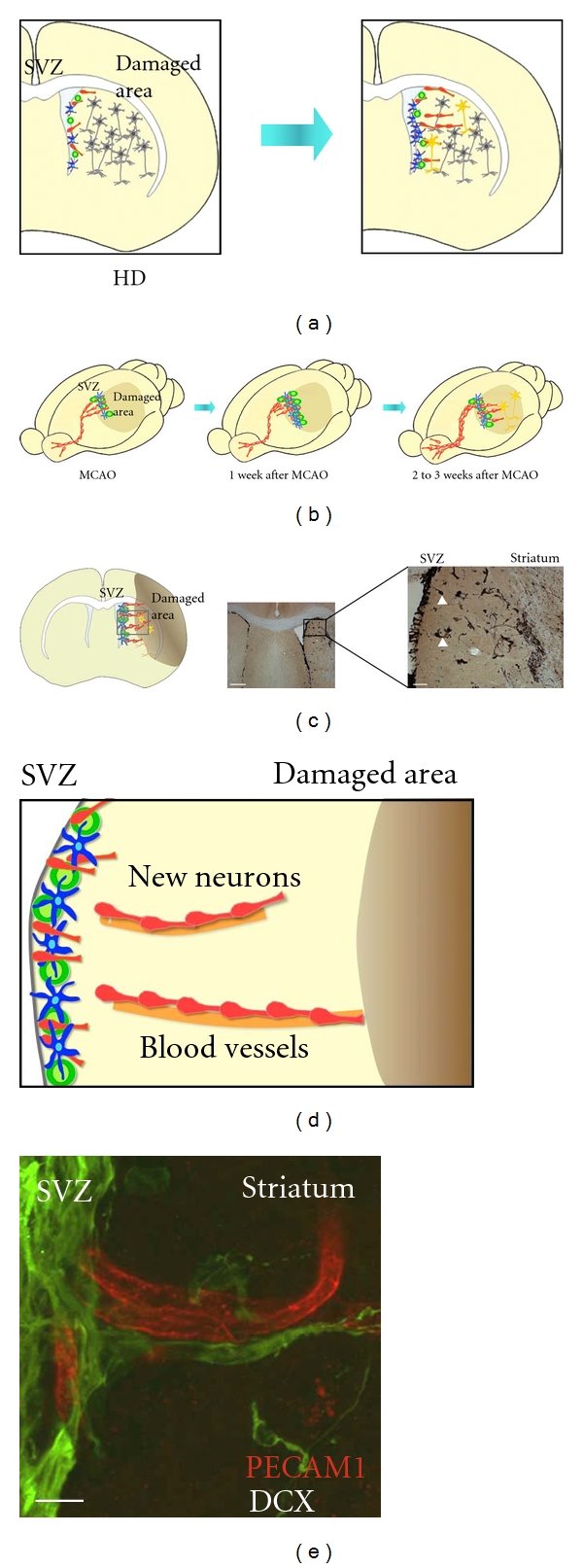Figure 2.

Neurogenesis after neuron loss. (a) Spontaneous neuronal regeneration in HD. In parallel with the progressive degeneration of striatal neurons caused by HD, the production of new neurons in the SVZ increases significantly. These new neurons migrate into the affected striatum, where only some differentiate into mature neurons. (b) Migration of new neurons toward the damaged area in the mouse MCAO model. MCAO causes an infarction in the striatum and adjacent parietal cortex. Within a week of the insult, neural stem cells (blue) and transit-amplifying cells (green) in the SVZ begin to proliferate, and by two or three weeks after MCAO, new neurons (red) migrate and appear at the border of the damaged area in the striatum. (c) At left, a schematic drawing of the coronal brain section 18 days after MCAO. At right a section immunostained for DCX. Boxed area is shown at higher magnification at far right. Many new neurons migrate into the ipsilateral striatum, but not the contralateral striatum. Some new neurons migrate into the striatum in chain-like clusters (far right, arrowheads). Scale bars: left, 500 μm; right, 200 μm. (d) Schematic drawing of new neurons migrating along blood vessels toward the damaged striatum. (e) Confocal projection image of new neurons migrating along blood vessels, in a coronal brain section, 18 days after MCAO. The section was immunostained for DCX (green) and an endothelial cell marker, PECAM-1 (red). Scale bar: 50 μm. MCAO, middle cerebral artery occlusion; SVZ, subventricular zone; OB, olfactory bulb; DCX, doublecortin; PECAM-1, platelet endothelial cell adhesion molecule-1.
